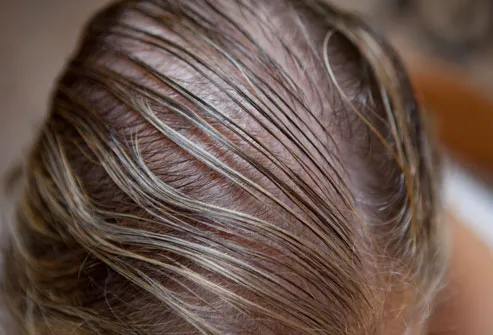If you have recently been diagnosed with anxiety or even just suspecting that you are suffering from some kind of anxiety disorder, you are probably feeling scared, overwhelmed and powerless, very alone and frustrated that people around you just do not understand what you are going through. Overcoming anxiety is not an easy work to do but there are some practical things you can perform in order to regain the control of your feelings and your life. In addition to this, a panic away program is a powerful and effective method to release stress and to get your life back.
The first thing to do if you want to overcome anxiety is to stop being judgmental about you and your disorder and not agonize about how you got in this situation. You are dealing with a difficult situation and from this moment you must have a positive attitude and focus on how to move on and feel better. You have to admit that panic attacks and anxiety are medical disorders and doesn't make sense to be dramatic because chemical and physical changes in your body are the main cause of this problem. It is just another illness that requires special attention and you must involve all your efforts and positive attitude in order to push panic away from your life. Understanding this disorder and the reasons why it occurs is already a major step in the process of overcoming anxiety. If you experience sensations such as dizziness, nausea, light headedness and a pounding heart and sometimes they even occur simultaneously, the first thing to do is to regulate your diet and your body and then regulate your mind and emotions. You also need dedicated examination and therapy and avoid anti-anxiety drugs and antidepressants because they can only help you on short-term.
Overcome anxiety is actually possible and you must strongly believe this and learn to deal with your worries in more productive ways, making any necessary anxiety-reducing lifestyle changes. Learning and practicing relaxation techniques such as deep breathing and and meditation will help your nervous system to become less reactive and thus you will have an increased resistance to stress and anxiety. It is also very important to learn how to self-sooth because this can make a great difference in your struggle to push panic away. This is an effective method that usually incorporates one or more of your physical senses, the senses of sight, sound, smell, touch and taste. If these self-help methods are not enough and the anxiety and panic attack persists, you should combine them with therapy or other treatments which are very useful and also side-effect free.
Regarding this matter, panic away program is a natural technique which doesn't involve medication because it is based on cognitive behavior therapy. Moreover, most of these techniques can be implemented in just a few minutes and they provide long-term relief and the possibility to eliminate anxiety forever. When you deal with this kind of problems you need to find a permanent solution to keep panic away and this program might be just what you need. This program has a proven formula and it instructs you how to break the panic cycle, to reestablish you self-confidence and get in control of your life.
Panic away program is different from other treatments since it fully empowers you instead of just instructing you ways to manage and deal with panic attacks once they have happened. The reliability of this program is proved by the fact that it has the largest collection of testimonials than any other treatment program and they can be affirmed thus panic away might be your chance to live a normal life.
For more resources about panic away or about panic away program or even about overcoming anxiety, please review these links.
You can find additional info at the following links:
Click Here for more information
Click Here for more information
The first thing to do if you want to overcome anxiety is to stop being judgmental about you and your disorder and not agonize about how you got in this situation. You are dealing with a difficult situation and from this moment you must have a positive attitude and focus on how to move on and feel better. You have to admit that panic attacks and anxiety are medical disorders and doesn't make sense to be dramatic because chemical and physical changes in your body are the main cause of this problem. It is just another illness that requires special attention and you must involve all your efforts and positive attitude in order to push panic away from your life. Understanding this disorder and the reasons why it occurs is already a major step in the process of overcoming anxiety. If you experience sensations such as dizziness, nausea, light headedness and a pounding heart and sometimes they even occur simultaneously, the first thing to do is to regulate your diet and your body and then regulate your mind and emotions. You also need dedicated examination and therapy and avoid anti-anxiety drugs and antidepressants because they can only help you on short-term.
Overcome anxiety is actually possible and you must strongly believe this and learn to deal with your worries in more productive ways, making any necessary anxiety-reducing lifestyle changes. Learning and practicing relaxation techniques such as deep breathing and and meditation will help your nervous system to become less reactive and thus you will have an increased resistance to stress and anxiety. It is also very important to learn how to self-sooth because this can make a great difference in your struggle to push panic away. This is an effective method that usually incorporates one or more of your physical senses, the senses of sight, sound, smell, touch and taste. If these self-help methods are not enough and the anxiety and panic attack persists, you should combine them with therapy or other treatments which are very useful and also side-effect free.
Regarding this matter, panic away program is a natural technique which doesn't involve medication because it is based on cognitive behavior therapy. Moreover, most of these techniques can be implemented in just a few minutes and they provide long-term relief and the possibility to eliminate anxiety forever. When you deal with this kind of problems you need to find a permanent solution to keep panic away and this program might be just what you need. This program has a proven formula and it instructs you how to break the panic cycle, to reestablish you self-confidence and get in control of your life.
Panic away program is different from other treatments since it fully empowers you instead of just instructing you ways to manage and deal with panic attacks once they have happened. The reliability of this program is proved by the fact that it has the largest collection of testimonials than any other treatment program and they can be affirmed thus panic away might be your chance to live a normal life.
For more resources about panic away or about panic away program or even about overcoming anxiety, please review these links.
You can find additional info at the following links:
Click Here for more information
Click Here for more information
















 Home
Home Privacy Policy
Privacy Policy Contact us
Contact us